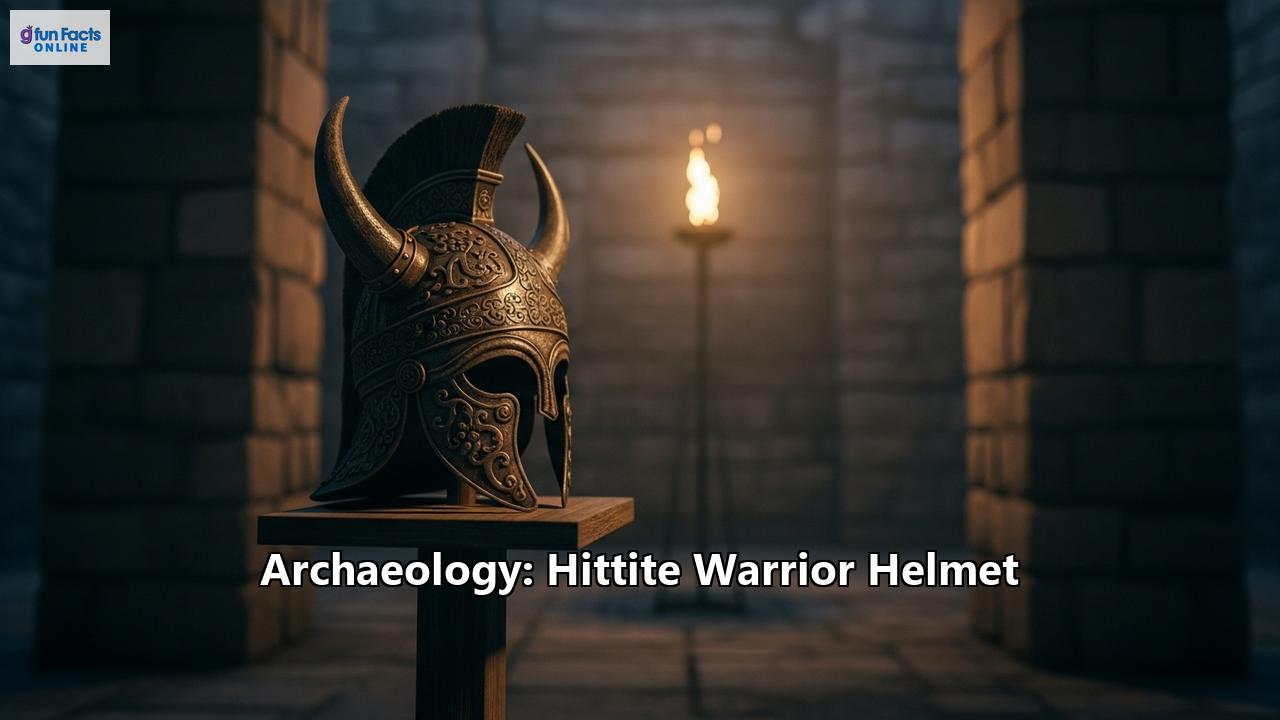A singular artifact, pulled from the earth of central Turkey, offers a rare and thrilling connection to one of the ancient world's most formidable civilizations. This is the story of a 3,300-year-old bronze helmet, a silent witness to the might, belief, and artistry of the Hittite Empire. Its discovery has unveiled remarkable insights into the life and culture of the warriors who once dominated the Anatolian peninsula.
Echoes of a Lost Superpower
Before delving into the helmet itself, it's essential to understand its creators. The Hittites were an Indo-European people who rose to prominence around the 17th century BCE, establishing an empire that became a major superpower in the ancient Near East by the 14th century BCE. They were formidable rivals to the Egyptians, Assyrians, and Babylonians, known for their advanced legal codes, masterful metallurgy, and, most famously, their revolutionary use of chariot warfare. From their grand, fortified capital of Hattusa, the Hittites controlled vast territories, and their influence shaped the political and military landscape of the era until their empire's collapse around 1200 BCE.
A Discovery Against the Odds
The story of the helmet begins at Şapinuva, an important religious and military center of the Hittite Empire. It was here, in 2002, that archaeologists unearthed the bronze helmet, found crushed under the debris of a building destroyed by a catastrophic fire some 3,300 years ago. Now painstakingly conserved and proudly displayed at the Çorum Archaeology Museum, this artifact is considered priceless, as it is one of the only complete Hittite helmets to have survived from the empire period.
Its survival is nothing short of miraculous. In the ancient world, bronze was a precious commodity. After battles, military gear was often taken as booty, melted down, and repurposed, meaning very few pieces endured. Furthermore, Hittite burial customs, which favored cremation or simple earth burials with few possessions, have offered archaeologists scant examples of military hardware. The Şapinuva helmet likely escaped this fate because it was not lost on a battlefield but was intentionally left in a sacred space.
Forged for War, Offered to the Gods
Analysis of the helmet reveals a fascinating duality, serving purposes both earthly and divine.
An Instrument of War: Its primary function was, without a doubt, protection. The helmet boasts a conical form with a distinctive pointed crest. A series of rivet holes line the edges, indicating where protective flaps of leather or bronze were once attached to shield the warrior's cheeks, ears, and neck. The design was clearly calculated to defend against the deadly blows of swords, axes, and spears in the chaotic heart of battle. A Symbol of Faith: Crucially, the helmet was discovered on an offering bench within a religious structure. This context strongly suggests it was a votive offering dedicated to a deity, most likely the powerful Storm God, who commanded the Hittite pantheon and was associated with both weather and war. This intertwining of warfare and religion was central to the Hittite worldview; they believed their gods marched with them into battle, sometimes even charging ahead of the army. To offer such a valuable and personal item as a helmet could have been a desperate plea for divine protection, a show of gratitude for a victory, or a testament to a warrior's piety.When Art and Archaeology Align
For years, our image of the Hittite warrior was shaped by stone carvings. The famous King's Gate at the capital, Hattusa, features a stunning relief of a figure, believed to be a god or a deified king, wearing a pointed helmet with cheek guards. The Şapinuva helmet provides breathtaking confirmation of these artistic depictions. The real artifact perfectly matches the one in the carving, proving that Hittite artisans were depicting their world with striking realism.
Inscriptions tell us the Hittites knew this type of helmet by the Hurrian name gur-sip-pi or the Hittite term hupruşhi. It was more than just headgear; it was a symbol of rank, honor, and divine blessing. The value of these helmets was so great that they were sometimes exchanged as high-status diplomatic gifts between the Hittite court and the pharaohs of Egypt.
The Wider World of the Hittite Warrior
The helmet was but one piece of the Hittite military machine. While an elite warrior wore this bronze helmet and likely donned scale armor, an ordinary foot soldier probably wore a simpler leather helmet and a tunic or kilt. The army itself was a sophisticated, professional force composed of household troops and a larger body of trained militia who were granted land in return for their service.
Their dominance on the battlefield stemmed from their advanced military tactics and technology. They armed their infantry with spears for close-quarters fighting, along with short swords and battle-axes. However, their most significant military achievement was their perfection of the war chariot. Heavier and more robust than those of their Egyptian rivals, Hittite chariots often carried a three-man crew—a driver, a spearman, and an archer—turning them into mobile weapons platforms that could shatter enemy lines. The legendary Battle of Kadesh, fought in 1274 BCE, is believed to be the largest chariot battle in history, a testament to the Hittite way of war.
The Şapinuva helmet provides a doorway into this lost world of epic battles and profound faith. It is a direct link to the identity of the Hittite warrior, a tangible piece of their story that survived millennia of silence. As it rests in its museum case, it continues to speak of the skilled hands that forged it, the warrior who wore it, and the powerful empire it once served.
Reference:
- https://arkeonews.net/ancient-hittite-bronze-helmet-unearthed-a-rare-glimpse-into-the-warrior-culture-of-a-forgotten-empire/
- https://www.hurriyetdailynews.com/unique-warrior-helmet-on-display-175420
- https://www.ebsco.com/research-starters/military-history-and-science/hittite-military-history
- https://www.judithstarkston.com/2022/09/21/a-hittite-bronze-helmet/
- https://arkeonews.net/a-rare-3300-year-old-bronze-helmet-reaching-the-present-from-the-hittite-empire-era/
- https://www.anatolianarchaeology.net/a-rare-3300-year-old-bronze-helmet-from-the-hittite-empire-is-on-display-at-the-corum-archaeology-museum/
- https://www.realmofhistory.com/2023/07/03/10-facts-hittite-warriors-bronze-age/
- https://www.artslookup.com/ancient/hittite-art-culture.html
- https://www.quora.com/What-would-Hittites-soldiers-wear-in-battle
- https://www.quora.com/What-was-the-most-effective-weapon-of-the-Hittites
- https://www.gordondoherty.co.uk/writeblog/the-hittite-war-machine
- https://warhistory.org/@msw/article/the-hittites-2

